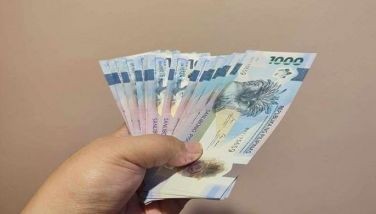Debt, capital markets needed for AEC
MANILA, Philippines - The 10-member nations Association of Southeast Asian Nations (Asean) must develop a deeper, better connected, and more efficient local debt and equity capital markets to transform its savings into investment for its next phase of growth.
Noel Quinn, regional head of Commercial Banking of the Hongkong and Shanghai Banking Corp. (HSBC), also said that the Asean needs a harmonized regulatory system to protect both lenders and borrowers.
In a report, Quinn said that local debt and capital markets was critical for the growth of the sub-region, in need, among others, large-scale development of its aging or absence of infrastructure.
“Frictionless cross-border banking will facilitate the growth of supply chains, both in terms of geographic breadth and skills depth, and will allow the pooling of assets for vital investments in the next phase of growth,” he said in a report.
Without significantly more investment in the physical hardware of connectivity – the roads, railways and ports that make trade possible – and the financial architecture to pay for it, the dream of a self-sustaining Asean economic powerhouse will never be fully realized.
“Asia has traditionally relied on bank loans for the bulk of its financing needs, but the scale and duration of the demand for infrastructure investment puts it in a different league,” the HSBC regional head said.
An economically unified Asean will represent a market of 640 million people with a combined gross domestic product of $2.4 trillion.
Experts say that if it were a nation, it would already be the world’s seventh largest economy, 25 percent larger than India. McKinsey and Company forecasts that the number of middle-class households in the region will more than double to 163 million between now and 2030.
But to realize its full potential, a lot has still to be done beyond the Dec. 2015 “deadline.”
There are three interlinked priorities that must be addressed to realize these potential. These are: trade connectivity, financial connectivity and physical connectivity.
“The group needs to keep up the pressure to dismantle tariff and non-tariff trade barriers, including for services industries,” Quinn said.
Much of Asia’s new growth, particularly in middle-income countries like Thailand and Malaysia, is going to come from the services sector and progress will be both faster and more stable if it can draw on a regional rather than a national talent pool.
The HSBC regional head said that the road to the Asean Economic Community or AEC has been long, and the celebrations at the end of this year will not mark the end of the journey.
The latest AEC scorecard, which came out in 2012, estimates that member nations had achieved 67.5 percent of their integration targets.
Further progress has been made since then, but some of the thorny issues – including free trade in food products and key service sectors – remain works in progress.
The regional expert said that the Asean is also spectacularly diverse, making the creation of a one-size-fits-all market even more challenging. GDP per capita in Singapore, Asean’s richest member, is more than 20 times that of Myanmar, its poorest; it embraces everything from an absolute monarchy, to nations with roots in communism; and it is founded on the principle of non-interference, which means that all members have to agree on measures before they can be implemented.
But even if the AEC will not be perfect and fully formed, its establishment will mark a milestone by underlining its members commitment walking a one-way path to greater integration.
The report said that the region’s diversity is a challenge but it is also an unmatched opportunity for self-sustaining growth: there are resource suppliers and resource consumers; high-value added producers making the goods that aspirational high-volume low-margin producers want and vice versa; and there is a clear understanding that together they can take on the world’s biggest producers and markets on their own terms.
“The full AEC vision is of a region connected physically, commercially and financially. Dec. 31 will be important, but it marks neither the beginning nor the end of the process. The community’s framers can look back at their achievements with pride, but it is more important that they look forward with determination,” Quinn pointed out.
The Association of Southeast Asian Nations includes Brunei, Cambodia, Indonesia, Laos, Malaysia, Myanmar, Singapore, Thailand, Vietnam and The Philippines.
- Latest





















